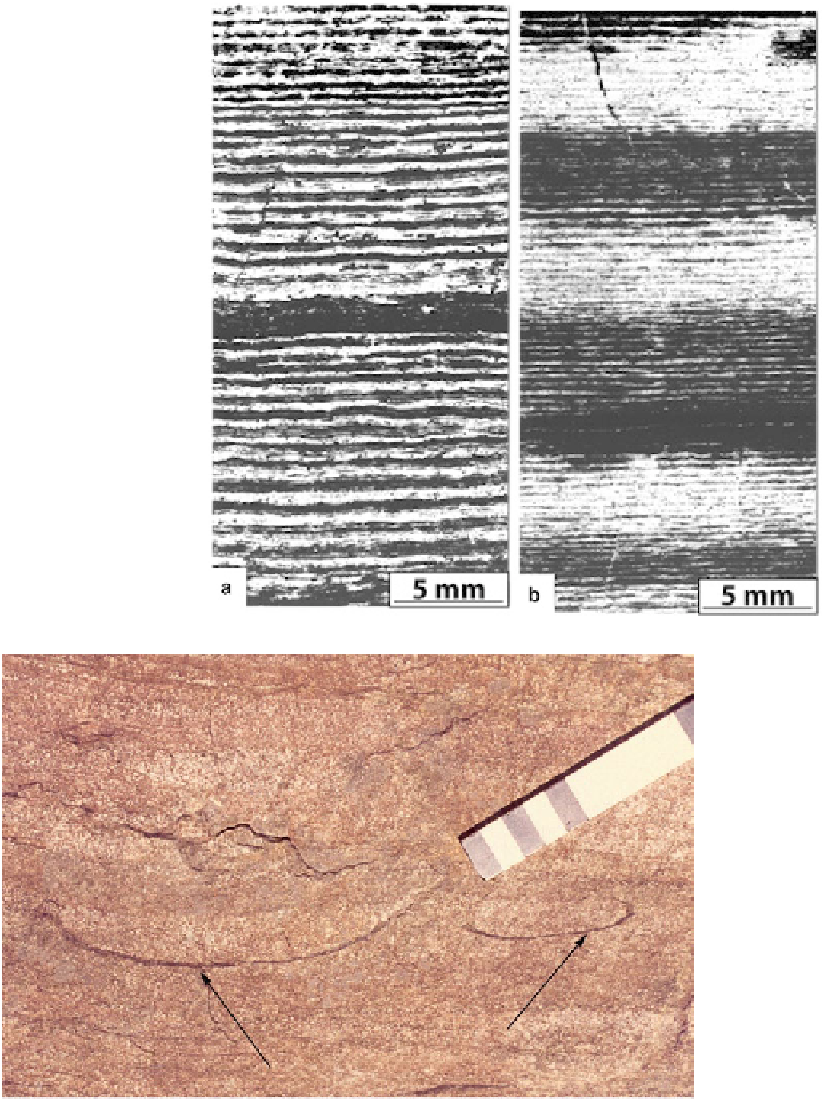Geology Reference
In-Depth Information
Fig. 15.22
Thin section
photomicrographs of
iron-formation from the
Weelie Wolli Formation,
Hamersley Basin, Western
Australia; (
a
) microbands of
alternating hematite and chert
in compacted iron-formation;
(
b
) silicified pods containing
couplets of hematite and chert
arranged in cycles that are
alternately richer and poorer
in hematite. See text for
details
Fig. 15.23
Rolled-up mudstone flakes (shown by
arrows
) in a matrix of coarse sand, Moodies Group Saddleback Syncline, Barberton
Greenstone Belt, South Africa. Preservation of rolled-up mudstone flakes is attributed to biostabilization. Scale in centimeters
drowned-shelf deposit. The vertical transition of facies
in the Eureka Syncline records progressive deepening
of the depositional interface (Fig.
15.24
) with the
BIF representing the equivalent of a condensed section
(maximum flooding surfaces). The vertical succession
of facies in the Moodies Group of the Dycedale
Syncline records a gradual increase in tidal influence
at the expense of braided-fluvial processes and thus an
overall upward-deepening of the depositional interface.
Thus, tidal facies in the Moodies Group are interpreted

